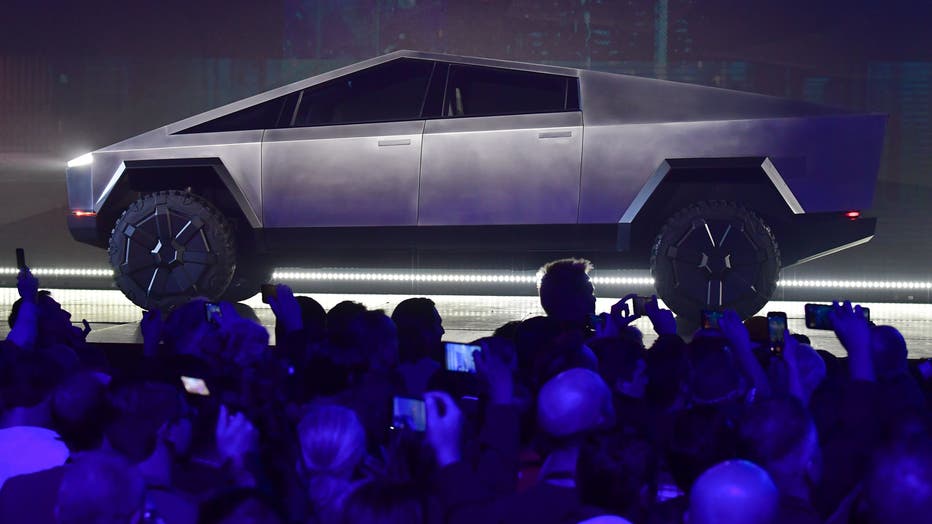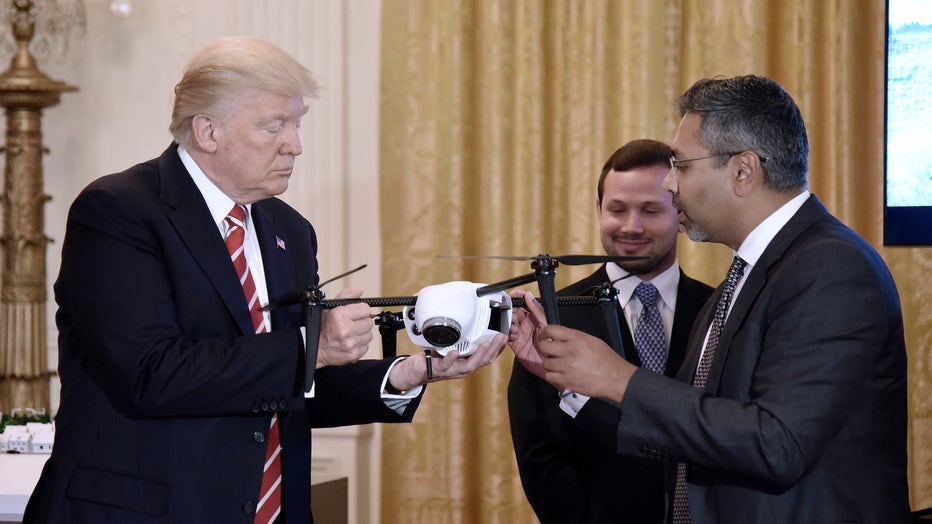From streaming to self-driving cars: How technology has changed our lives over the past 10 years

How technology has changed our lives over the past 10 years
Technology has changed our lives dramatically over the past decade, forcing consumers to look at products in a way they never have before.
LOS ANGELES - Technology has changed our lives dramatically over the past decade, forcing consumers to look at products in a way they never have before.
And while the list of ways in which our lives have been forever altered by tech might seem endless, from summoning a ride and even a date on an app, to smart homes and Alexa, over the past 10 years there have been some major themes that run throughout the shift in our collective reality.

FILE - People take pictures of the newly unveiled all-electric battery-powered Tesla's Cybertruck at Tesla Design Center in Hawthorne, California on November 21, 2019.
STREAMING KILLED THE VIDEO STAR
Everyone thought Blu-ray would be the next best thing when it was first released in 2003. Inevitably, it was replaced by something better. High-definition streaming services ready to be viewed at a moment’s notice debuted just four years later when Netflix introduced streaming in 2007.
No one thought before to topple the multi-million-dollar industry and great American pastime of going to the movies. But companies like Netflix figured they could fix a problem no one really thought they had. Consumers could now enjoy the same experience of going to a movie theater from the comfort of their living rooms and save on the $20 worth of snacks and drinks.
While Netflix had primarily existed as a mail-in movie rental service directly competing with companies like Blockbuster, the ability to stream an almost unfathomable amount of content would set the standard for how everyone watches everything.
In the 2010s, streaming became ubiquitous. Netflix graduated to big-budget original productions, and other tech companies and major networks also got in on the streaming game.
RELATED: Retail apocalypse: How e-commerce slowly killed the neighborhood retail store over the past decade
In 2013, Netflix debuted its very first in-house production, “House of Cards,” setting the stage for unforgettable titles to come.
Now, with more paid subscribers than the entire population of Japan, Netflix gives its users an unfathomable amount of content to choose from, and it’s not even the only streaming service.
Naturally, nearly every major media company in existence has either begun to follow suit or is working on jumping on the streaming bandwagon with more on the horizon.
THERE'S AN APP FOR THAT
Created in 2007, the iPhone was undoubtedly the biggest game changer of that decade. In an age when people still remembered the horrors of dial-up internet, the revolutionary device gave everyone the power of the world wide web in their own pocket.

FILE - Apple CEO Steve Jobs holds up the new iPhone that was introduced at Macworld on January 9, 2007 in San Francisco, California.
Streaming services made it possible to consume content wherever you are, but devices like the iPhone and the other “smart-phones” that followed allowed consumers to gain access to content wherever they go.
Nowadays, people don’t understand the gravity of a device like the smartphone — until you ask someone to get where they need to go with a physical map.
The iPhone changed everything, from the way we consume media, to the way we communicate and even how we work.
Streaming may have given people the power of media at the touch of a button, but the growing ubiquity of smartphone apps gave people the option to order food, find a job, communicate with loved ones around the world and so much more.
No longer was there a need to waste time running to the bank to check your balance or transfer funds. No need to worry about getting directions to where you want to go or what you’re going to eat.
But like everything, the rise of smartphone apps had its pros and cons. A study published in the journal JAMA Pediatrics found that children’s daily screen time increased from 53 minutes at age 12 months to over 150 minutes at 3 years old.
The United States Department of Transportation says that distracted driving, which includes using a phone while operating a motor vehicle, contributed to 3,166 deaths in 2017 alone.
A 2018 study found that the act of taking selfies with a smartphone was the cause of 250 deaths worldwide in the prior six years.
Good or bad, these new devices have opened up a whole realm of new possibilities. Smartphone-related deaths may be in the thousands, but the technology remains in the hands of the average consumer, and shows no signs of fading away.
LOVE AT FIRST SWIPE
As smartphone technology advances, it is becoming clearer that the metal brick in your pocket is finding its way into every aspect of your life — including being your very own digital wingman.
Apps like Tinder, Hinge, Grindr and Bumble were spawned in hopes of giving people the option to find their next potential soulmate at the click of a button, or in some cases, a swipe.
These services completely reshaped the dating world as we know it.
A 2012 study published in the journal Proceedings of the National Academy of Sciences analyzed data from 19,000 people who married between 2005 and concluded that those who met their spouse online were more satisfied than those who met offline.
For the next 10 years, people might find themselves asking, “How did I meet people in real life?”
While it may seem shallow to think that the same process that goes into picking a movie on Netflix also goes to finding a potential mate, there’s absolutely no doubt of the thousands of connections that have been cultivated thanks to dating apps.
ROBOTS ARE TAKING YOUR JOBS
The 2010s might be known as the decade where people saw science fiction become reality in their everyday lives.
A 2019 study from Oxford Economics predicts that in the next decade, nearly 14 million robots could be put to work in China alone.
From drones to self driving cars, robots and artificial intelligence are popping up everywhere.
According to a report from Voicebot.ai and Voicify, smart speaker owners in the U.S. grew 40 percent in 2018, reaching the homes of 66.4 million people. As the 2020s draw nearer, it is obvious that humans are more connected and more reliant on robots to do their bidding.
Moments like a viral video that showed a man fast asleep in the driver’s seat of his self-driving Tesla on a major freeway traveling at high speeds are becoming more commonplace, making some people wonder if this is what it was like to see the first car zoom past a horse and buggy when the first Model T was produced over 100 years ago.
Amazon unveiling its delivery drone service could either mean consumer paradise or dystopian nightmare, and while these technologies are widening their footprint in the new decade, they have have already made a huge impact.
Similar to Tesla’s self-driving cars, Amazon said its drones use computer-vision technology in order to detect and avoid crashing into people, even accounting for laundry clotheslines that still might be pitched in people’s backyards in 2019.
"From paragliders to power lines to a corgi in the backyard, the brain of the drone has safety covered," said Jeff Wilke, who oversees Amazon's retail business.
Drones seem to be the first group of robots taking everyone’s jobs. A report by Goldman Sachs said that military defense will remain the largest market for drones for the foreseeable future, estimating that military organizations around the world are expected to spend $70 billion on drones by 2020.

FILE - U.S President Donald Trump holds a drone as George Mathew CEO & Chairman of Kespry explains how it works during the American Leadership in Emerging Technology Event in 2017.

